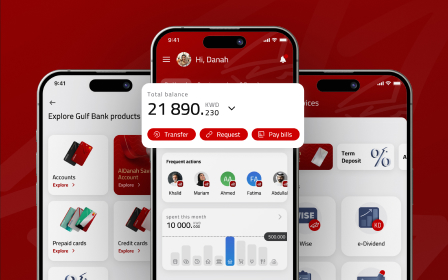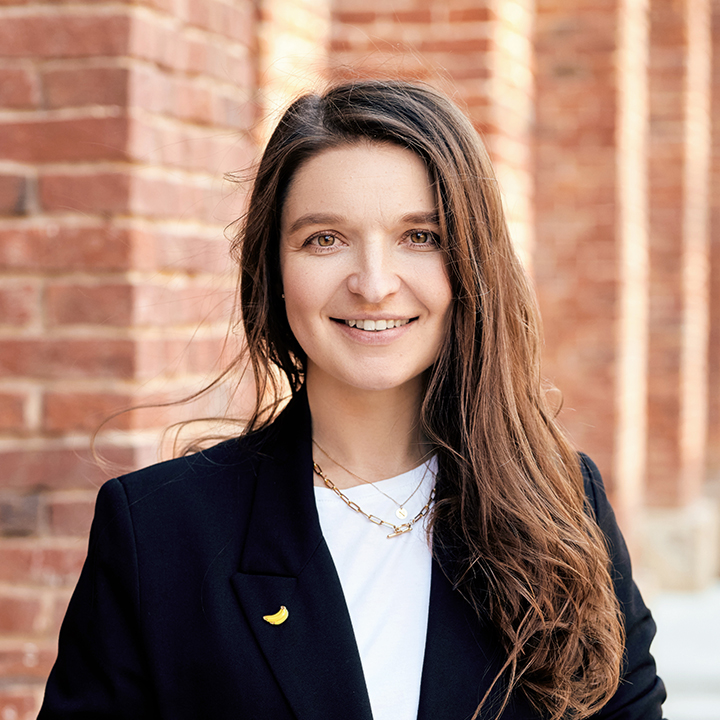How we contributed to the company’s success via OKR Methodology
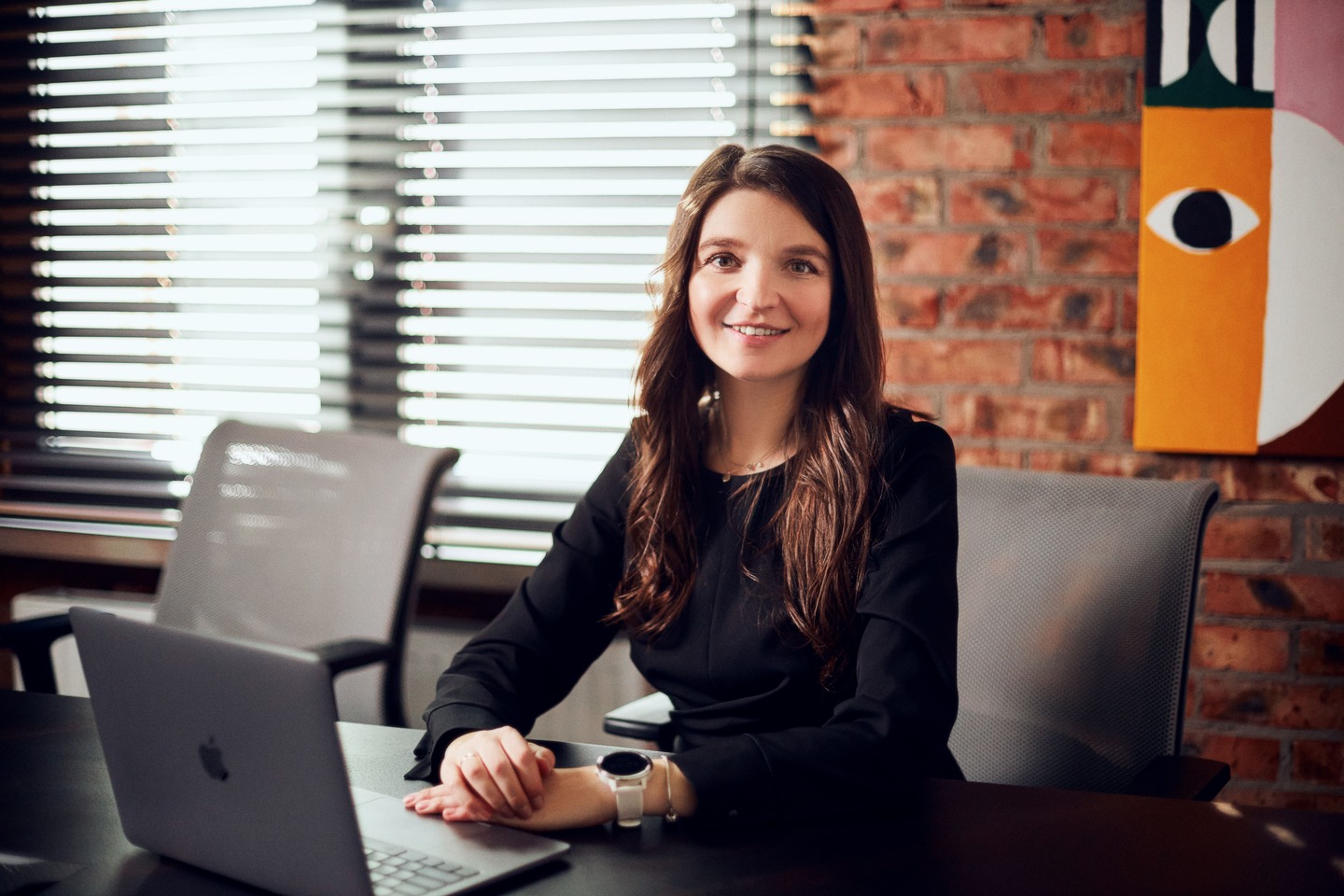
Looking back on 2021, we conclude it was one of the most fruitful years at Qubstudio. You may be wondering, why?
This year, our team has grown by 30%, thus deepening the company’s expertise. We have managed to raise the Net promoter score to 75.6%, which is beneficial. Qubstudio currently holds 4th place on Clutch’s list of Top User Experience (UX) Agencies.
Our extensive team continues to produce effective and meaningful work by engaging intelligent perspectives and innovative creativity. In 2021, we worked on more than 80 diverse projects and contributed to the company’s outstanding results.
I believe that our success lies in the OKR methodology. As the CEO of Qubstudio, I will dwell upon running the company and achieving more in less time using OKRs — so please read and uncover.
A quick recap of the theory
At Qubstudio, we are sure that OKR methodology is the best way to achieve global progress-based and aspirational goals. Coming from Intel and championed in 1999 by Google, OKR (Objective Key Result) is a methodology of setting ambitious, tracked, and re-evaluated goals — usually quarterly.
As one of the best practices to manage employee and team tasks, it provides crystal-clear directions and expectations. A significant advantage of OKRs is that it raises the employee engagement percentage — a measure of success in the service business.
To set the goals, you need to answer three questions:
Where do I want to go? — This provides you with the objective.
How will I know I’m on the right track? — This shows you the key results.
How will I get there? — This defines your initiatives.
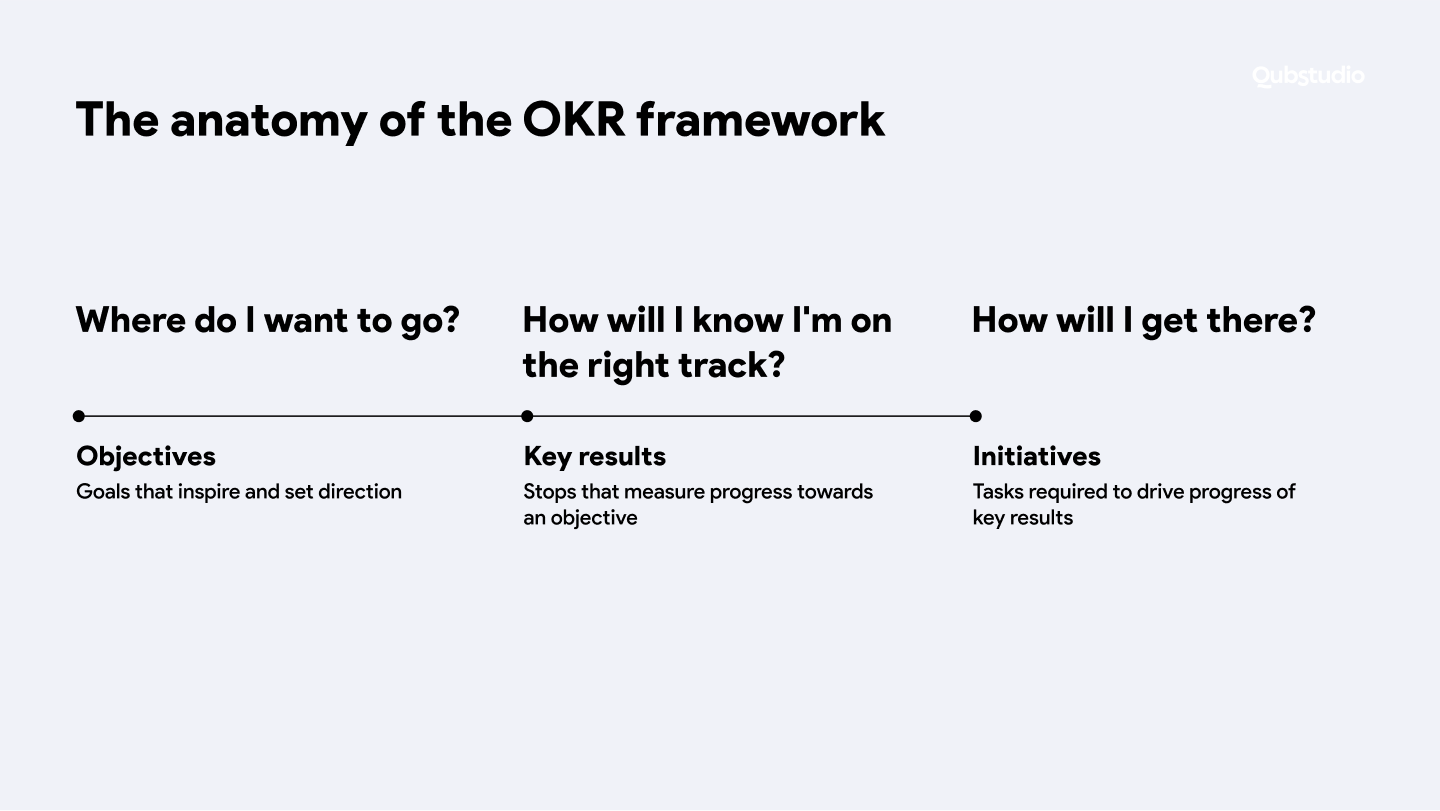
The next step is to prioritize your objectives according to what the business needs most. It is wise to set no more than 4 or 5 objectives, as more usually leads to over-extended teams and diffusion of effort. Be sure to pay attention to the formulation of the aims — they should be precise and measurable.
Through a thorny path to the aim: Our experience
The first pancake is always spoiled — so were the first three attempts of providing methodology in the Qubstudio environment. The challenges we faced at the beginning were:
- Too many set goals
- No structured reporting and synchronization = no responsibility
- No goal moderator = no system
When we increased our team to 50 members, we discovered there were too many messages going between departments, so we needed new tools to create more effective communication and monitor progress. Ultimately, our 4th attempt of implementing the methodology proved successful.
Though our leadership team was already aware of the methodology theory, we involved the specialist to define, set up, and implement OKRs correctly. For consulting, we chose Anna Golovchenko and, as a result — came up with three global company goals for the year. We then proceeded with onboarding the employees.
The success also lies in who is presenting. In order to be taken seriously, many innovations and changes in the company should be initiated and shared by the management team or CEO. With this in mind, our management team presented the set goals and discussed their value and the overall methodology.
Now, let’s get closer to the structuring. By this time, you may be wondering which global company goals we set as a digital design agency.
We aimed to:
- Become long-term partners, who value and use the design-driven approach
- Grow financially & professionally
- Be the best team of experts
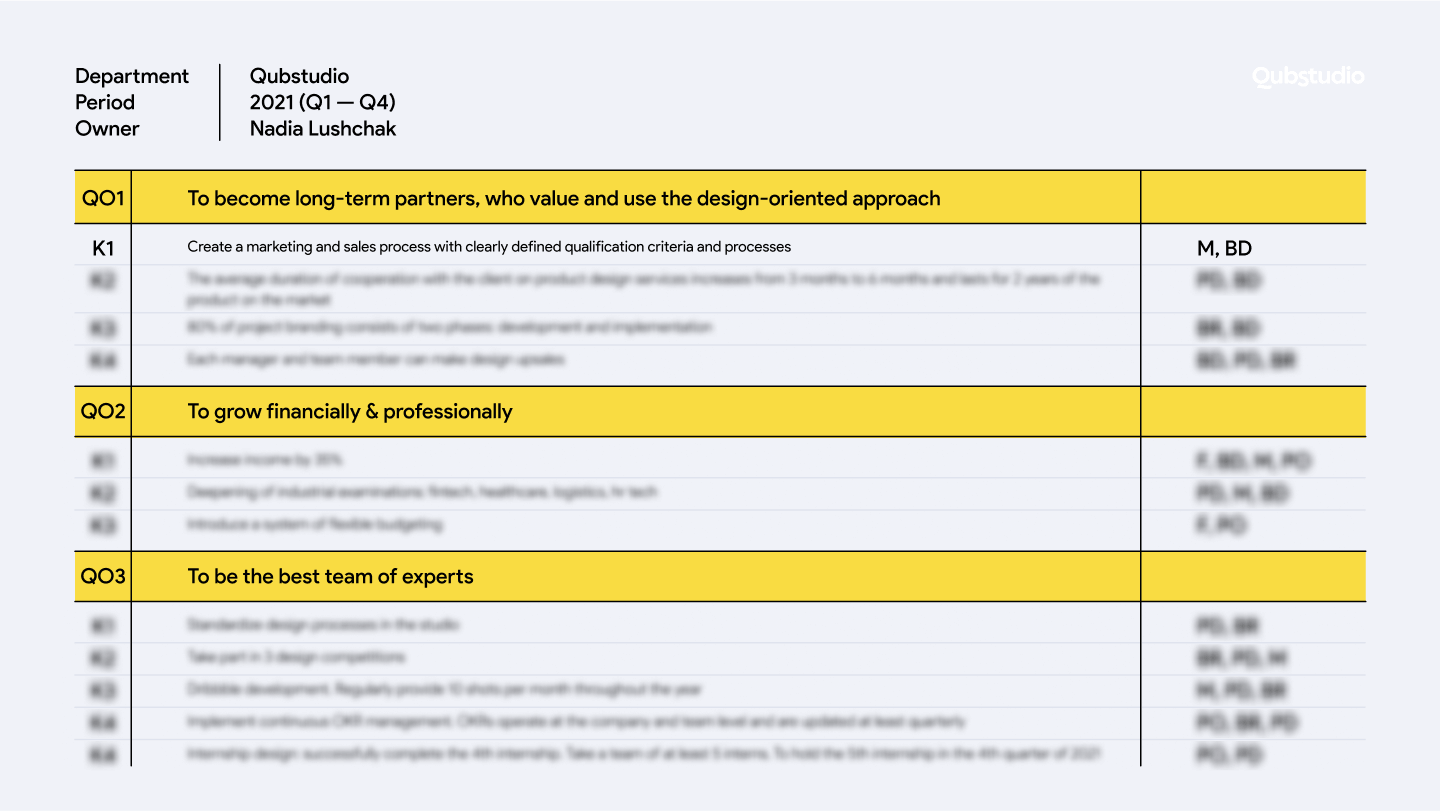
Download our OKR spreadsheet template to set your objectives and find out how it works.
Then, all the departments defined and set their objectives within the general ones.
- Product Design & Business Analysis
- Branding Expression
- Sales
- Marketing
- HR
- Finances
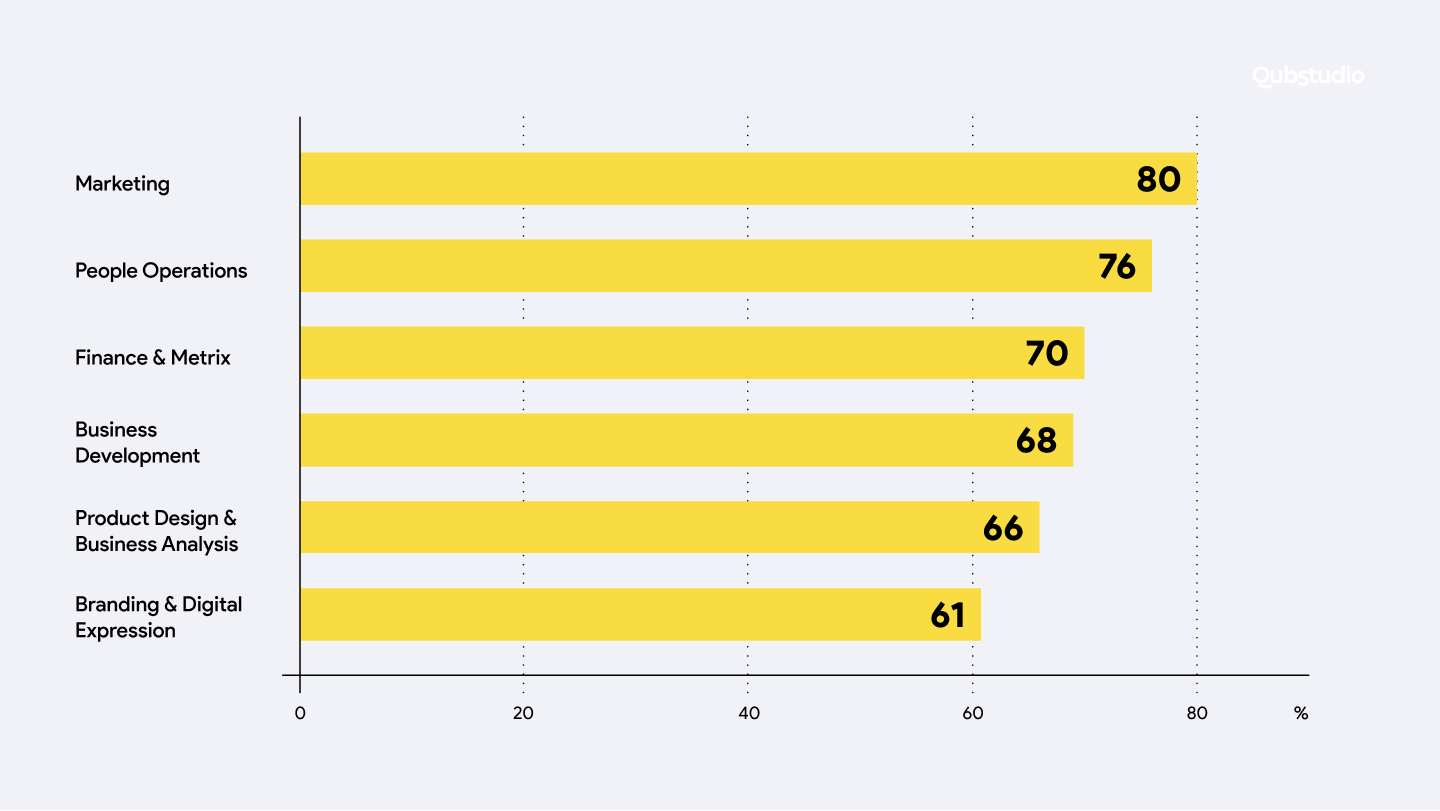
As a result, each of the 6 departments contributed to the company’s success by covering their fields of responsibility. To measure progress, we use a percentage system and sum up achievements every quarter.
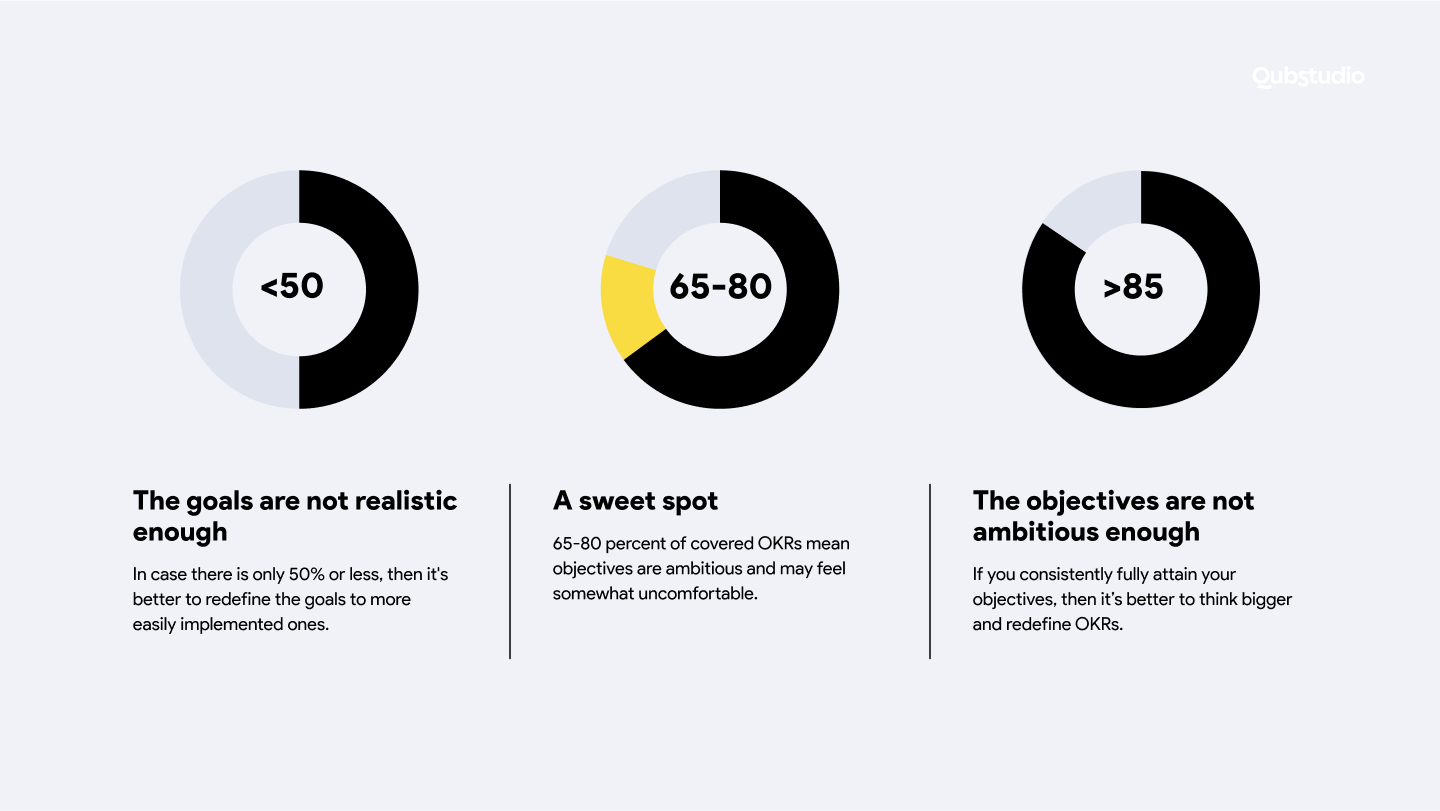
65-80% covered OKRs is a sweet spot. If results rise to more than 85% — the objectives were not ambitious enough. In the event that results only increase to 50% or less, then it is better to redefine the goals to more easily implemented ones.
Here is the example of 66% covered OKRs in the Product Design & BA department:
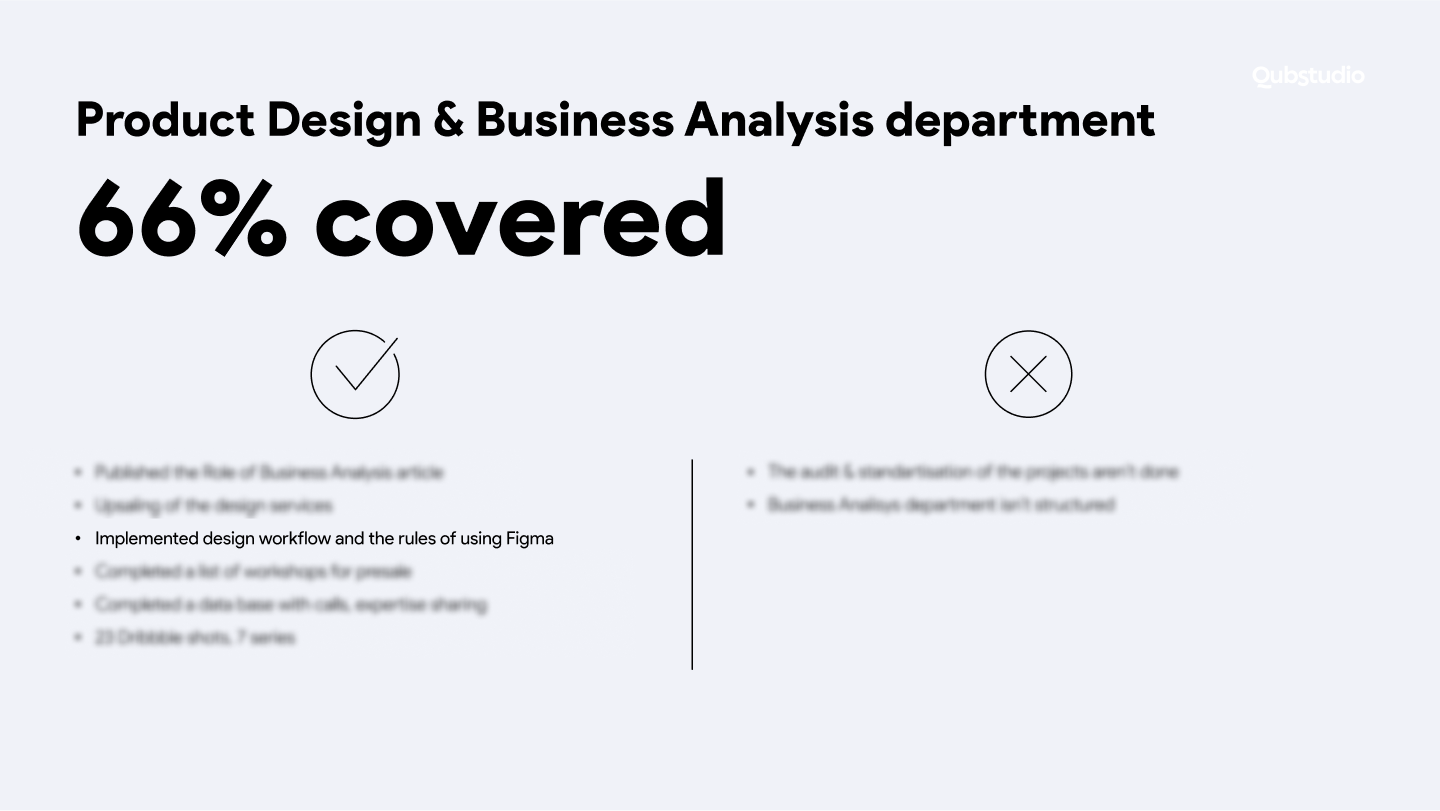
Within these quarterly objectives, the department contributed to the yearly ones. We make and share the quarterly retrospective to better measure success, track our progress, and determine if our tempo is rapid enough.
One of the Product Design department objectives was optimization & implementation of the Product Design workflow. See how it improves our work here.
OKRs: key benefits
The best part of implementing a methodology is reaping the benefits — and here are some we noticed:
-
- Communication transparency and team synchronization
We set up company objectives per year and department objectives per quarter. The departments can thus track their progress and speed up or unite to drive more remarkable results. Additionally, OKRs provide the CEO with a helicopter view — so it is easier to track how daily routine work contributes to achieving global goals.
-
-
- Rise of employee engagement rate
-
A significant portion of the entire Qubstudio team is involved in fulfilling OKRs within the employees’ competency and responsibilities. Thus, such affiliation to joint success is a strong motivator for our members.
-
-
-
- The focus on key objectives
-
-
To ensure that we keep attention on achieving crucial company goals, the departments retrospect their inputs once a quarter. Such an approach provides us with the task’s beginning and end. Also, it forms the deadline — and is there anythingmore motivating than adeadline?
-
-
-
-
- The spirit of rivalry between departments
-
-
-
A friendly competition vibe is yet another motivator. No one wants to be a loser, so departments make efforts at the maximum extent possible to complete a high percentage of OKRs.
Final thoughts
Objective Key Result methodology allows employees to interact with others, gain practical knowledge of working in different fields, and become a part of the company’s success. Generally, not only Heads of Departments are OKRs owners; members are also eager to share their input. This way, we enable our employees to grow professionally and try their strengths as managers or moderators.
At Qubstudio, driving and managing OKRs is my crucial responsibility as the CEO. I track achievements, statuses, and workload and report it to the company’s founders. As all the information about progress is filled in one table, running the company becomes greatly simplified.
The establishment of the OKR methodology at Qubstudio has enabled teams to concentrate on the big bets and accomplish more than they thought was possible. The results are visible — and it motivates us all even more.
As the OKR methodology has proved successful, now we are actively brainstorming new ambitious objectives for 2022. To keep abreast of our results — stay in touch.
Сontact us to achieve your business goals with the help of digital product design.

